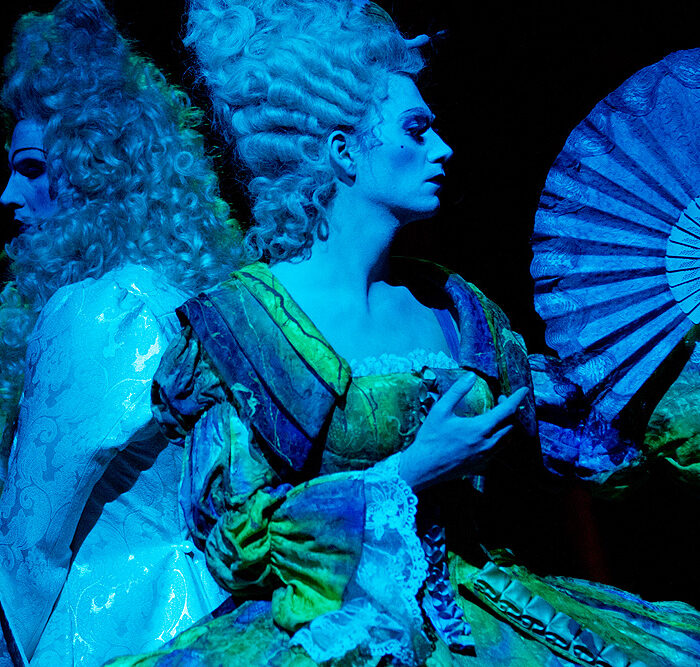
Opera Profile: Péter Eötvös’ ‘Senza Sangue’
By John Vandevert(Image Source: Official Website)
With a modest cast of only two, and composed as a modern compliment to Bela Bartok’s expressionist opera “Bluebeard’s Castle”, composed in 1918 and reading as a complex, minor-second analogy of Bartok’s inner turmoil at the time, Hungarian composer Péter Eötvös’ 12th one-act opera “Senza sangue” is a pearl of the new operatic epoch, a testament to the power of expanded stories, and the unification of reality, hardship, hope, and music.
Commissioned by the KölnMusik and the New York Philharmonic in 2015, the opera tells the tale of Nina and Pedro, the the former a child bride and victim of civil war, whose family was killed before her and whose life was upended because of it, and the latter, one of the soldiers responsible for killing Nina’s family. However, he chose to spare her life, and after meeting again after so long Pedro finds himself falling in love with Nina after their chance encounter all those years later turns intimate.
The Opera
The opera’s structural core is based around two influences, Bartok’s 1918 opera, chosen as a conceptual link as there were no good partners to Bartok’s tale of dissolution and sorrow, and Alessander Baricco’s 2002 similarly-titled novel. The Italian-language libretto was written by Eötvös’ long-time colleague Mari Mezei, who purposefully chose a section of the book which dealt with gendered relations in a raw and visceral way. In the book’s second half the woman (Nina), having been mysteriously linked with two of the men who killed her family, is revealed to have purposely tracked down the man (Pedro) in order to be saved once more but not just from external danger but from herself and her troubled past (and present). Thus, juxtaposed against Bartok’s radically transparent but ultimately fragmented, Bluebird being left on his own as Judith (his fourth wife) reveals all his horrible secrets behind the doors of his castle, “Senza sangue” inverts the traditional hierarchy of operatic love, and instead takes the Nietzschean angle. Nina no longer wishes to run from her pain but instead seeks to embrace her fate, change the course of her life, and ultimately gain absolution from her deeds, experiences, and the crimes against her she’s had to endure for so long.
Thus, Eötvös’ opera plays with the barriers between context and meaning, the absence of clear explanations, and the slow burn of unsolvable unknowing against our natural desire to know. Toying with the notions of “Amour fati” and “eternal recurrence,” is it possible to grow after such hardship? Is redemption even possible anymore after enduring so much? Dowe really deserve happiness in the face of such difficulty, is it even possible anymore for us? Rather than the supernatural world of a castle, an intangible place, the opera is set in the palpable now, a tangible setting for life’s trials and follies to unfold, a place which we can all relate to and where the everyman resides (and by extension us as well).
In a way, Eötvös’ opera portrays femininity as both enigmatic and relatable, thus challenging the erroneous notion of the operatic “ideal woman” and chastising tropes of suppleness, timidity, submissiveness, wild, guilty, naive, and juvenile in all but looks, associated with operatic heroines and females. The opera’s structure is comprised of an orchestral introduction, seven thematically connected scenes replete with flashbacks and backstory revelations of Nina’s childhood, and a musically charged epilogue where bombastic instrumental shouts, jagged exclaims, and piercing textures accompany Nina and Pedro’s sensual act of absolution, all as if to say that the past is not yet lost and forgotten.
The opera was first premiered in concert version on May 1st of 2015 with Anne Sofie von Otter and Russell Braun in the roles of Nina Pedro, conducted by Alan Gilbert, and accompanied by the New York Philharmonic Orchestra. It was later given its staged premiere one year later on May 15th, 2016 at the Festival d’Avignon under the baton of Eötvös himself.
Listen
Categories
Opera Wiki

